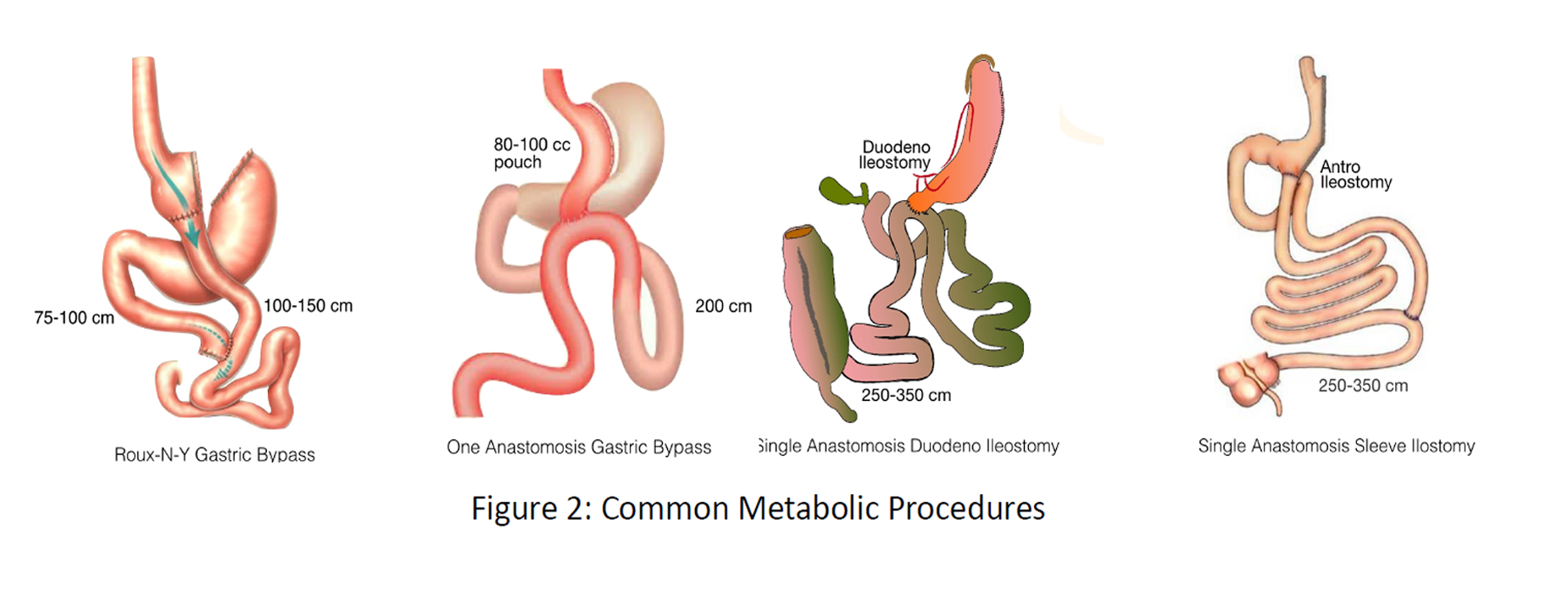
The Background
There is a growing epidemic of obesity and type 2 diabetes in the world; more than 75% of the patients are obese and diabetic in the developing countries. Economic growth has had an impact on waistlines. India figures glaringly both in the hunger map of the world as well as being the world’s capital of diabetes. Reduced physical exercise, high intake of calorie rich foods (example, fast food — or “junk food”), prepared foods that are high in salt, sugars or fat example pizzas, and pastries, combined with our increasingly sedentary lifestyles, changing modes of transportation, and genetic factors has increased the prevalence of obesity. With overweight rates increasing by 20 percent between 1998 and 2005 according to Organisation for Economic Cooperation and Development (OECD) study published in The Lancet medical journal in 2010, obesity has reached epidemic proportions in India.
A more severe form of the problem of obesity is morbid obesity. A morbidly obese patient is unable to shed excessive weight by merely adopting diet programs and exercises. Obese people have a Body Mass Index (BMI) between 27.5 and 37.5. BMI is a measuring tool of finding out whether an individual’s body weight is ‘normal’, overweight, obese or morbidly obese. In case of an indication of having body weight more than 20 percent of the required ideal in relation to the height of an individual, a person is considered obese. Individuals who are morbidly obese, on the other hand, are at an extremely high risk for various life threatening conditions. Morbidly obese people have a BMI (Body Mass Index) of 32.5 to 37 or higher, unsuccessfully try many a fad diets, take so called “weight reducing pills” and attempt other means of weight loss.

What makes this condition especially dangerous is that morbidly obese people are prone to comorbidities such as cardiovascular diseases, Type 2 diabetes and high blood pressure, liver diseases, cancer, uterine conditions, infertility, erectile dysfunction, sleep apnea, Alzheimer’s disease and depression.
The link between obesity and diabetes is firmly established. Diabetes and obesity currently threaten the health, well-being and economic welfare of virtually every country in the world. Diabetes is a global epidemic with 285 million patients worldwide currently. And India with nearly 50.8 million diabetics in the 20-79 age groups suffering from the disease in 2010, according to the World Diabetes Foundation, as mentioned earlier, is the diabetes capital of the world. Obesity sets the stage for diabetes. Obesity increases the risk of developing insulin resistance and an obese person requires much more insulin to maintain their glucose levels. Over a period of time, with increasing fat, the body loses the ability to process insulin properly. When untreated, morbid obesity can compound the health risks severely and can turn life threatening.
Diabetes mellitus is a metabolic disorder characterized by high levels of glucose in the blood. In type 2 diabetes, the high blood glucose level is caused by the body’s inability to produce insulin in response to glucose, together with impairment of insulin’s effectiveness in stimulating glucose uptake by skeletal muscle and other tissues. The high blood glucose levels, in turn, may lead to organ damage involving the kidneys (diabetic nephropathy), nervous system (diabetic neuropathy), eyes (diabetic retinopathy) and the circulatory system.
Changes in lifestyle that lead to weight loss reduce the incidence of diabetes and hypertension. According to various published studies, diabetics have another option other than making lifestyle changes and undergoing intensive medical treatment which is metabolic surgery, commonly known as, weightloss surgery. Randomised control trial studies comparing medical therapy with metabolic surgery found that obese patients who had undergone surgery for diabetes were able to gain much better glycemic control as compared to patients who received only medical therapy. The remission rates (subsidize symptoms) of type 2 diabetes for patients who had undergone weight loss surgery were as high as 95 percent in some cases.
Metabolic Surgery
Metabolic surgery, results in restoring insulin action in the body. It has proved to be more effective than either standard or intensive medical treatment alone with respect to improving glycemic and metabolic control and inducing remission, i.e. subsidizes symptoms, among obese patients with type 2 diabetes.
Evidence has been accumulated over the years that metabolic surgery is the most effective therapy for Diabetes Mellitus. This procedure significantly aids in partial or complete remission of diabetes. Though all bariatric surgeries are performed to resolve diabetes and other comorbidities, Metabolic surgery is also used on individuals who doesn’t have morbid / severe obesity (BMI 27.5 to 32.5). When patients are faced with metabolic risks of developing diabetes and other disease process, the surgeon will evaluate to recommend a metabolic procedure which largely include various types of gastric bypasses. Metabolic surgery also results in good weight loss, improves overall health, reduces dependence on medication in case of heart diseases, and in specific cases completely resolves diabetes and, resulting in changes in the hormonal balance.

Conclusion
Obesity and diabetes is a serious medical condition that needs immediate attention across the world. Obesity and diabetes are one of today’s most blatantly visible – yet most neglected – public health problems.

